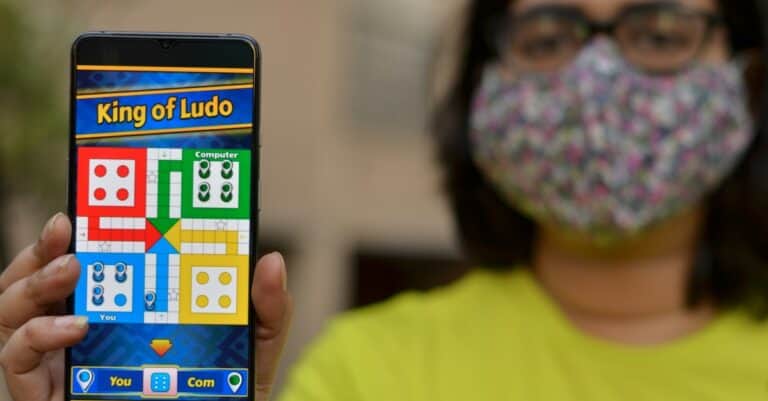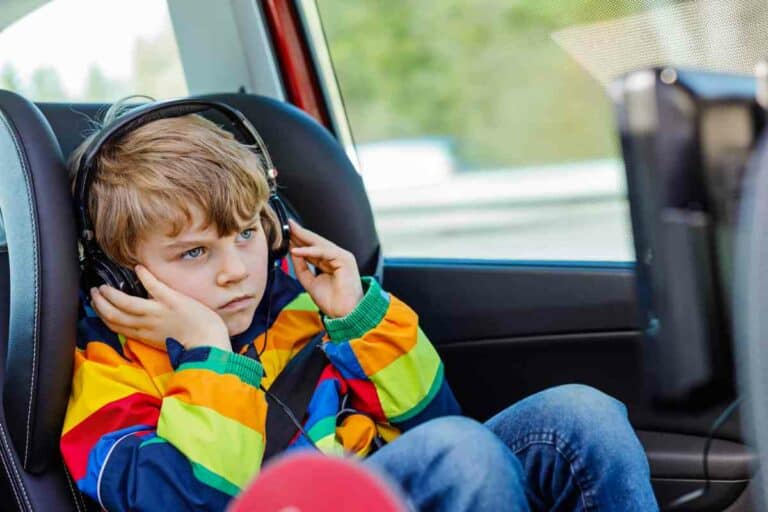All Things Sensory Toys: Our Top Picks and Ideas
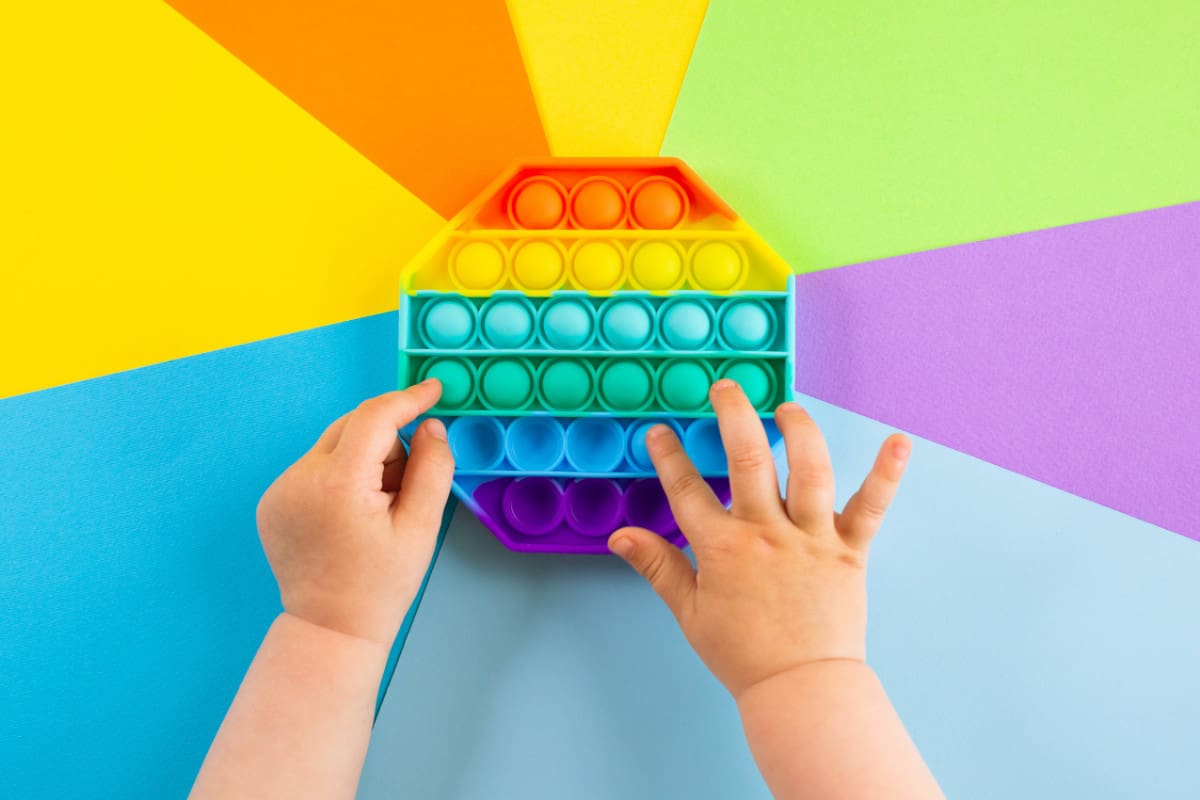
Sensory toys are beneficial for kids of all ages–from babies and toddlers to teens. Not only do they provide hours of fun, but they can also be great learning and coping tools! Keep reading some of our best ideas for sensory toys you can make at home or buy.
*This article contains affiliate links, and as an Amazon affiliate, we earn from qualifying purchases. There may also be affiliate links from other programs. Clicking on these links won’t cost you anything, but we might earn a small commission from clicks or purchases that will go back into helping us create more great content.
What Are Sensory Toys?
Sensory toys are any object or toy that appropriately functions to stimulate a child’s sense of sight, sound, smell, taste, touch, balance, and body awareness.
That can mean anything from a tactile puzzle, a noise-making device, or a gross motor activity. Whether your child is a toddler or pre-teen, having visual, auditory, and tactile toys and activities can all be helpful when it comes to keeping them occupied and stimulated.
What Are the Benefits of Sensory Toys for Kids?
While every child can benefit from sensory-based toys, they’re especially helpful for a child with special needs like a learning disability, Autism, sensory processing disorders, and ADHD.
When a child’s senses are engaged, that stimulation all goes on inside the brain and is closely related to tons of other skills that your child needs to grow into a fully functional adult. It can help with fine motor skills like writing, cutting, and zipping their coat. These kinds of toys can also help with gross motor skills and hand-eye coordination when it comes to activities like jumping, climbing a ladder, or riding a bike.
Not only that, research shows that sensory play builds nerve connections in the brain’s pathways, which lead to the child’s ability to complete more complex learning tasks. Sensory play supports language development, cognitive growth, problem-solving skills, and social interaction.
How Sensory Toys Help Manage Distraction and Stress
Sensory toys can help give a child the sensations they want in a safe way! Because when kids are busy trying to get the feelings they like, it distracts their brain from everything else it needs to be doing, like listening, following directions, socializing, sleeping, etc.
Sensory toys can also help children with Autism in situational stress, encouraging them to relax, focus, and calm down during a scenario or event. Smaller, store-bought sensory toys like fidget spinners, squish balls, and handheld puzzles can be especially helpful in keeping your child appropriately stimulated in overwhelming or distractable environments.
How to Make Sensory Toys at Home
You don’t need to break the bank to have great sensory toys. In fact, even the simplest materials can make great DIY sensory toys and puzzles.
Color Discovery Bottles
You can even get your child’s help when making this sensory toy! Your child will love discovering everything inside, shaking it, hearing it rattle, feeling the weight, and looking for all the things they put inside. You can fill it with water (and waterproof objects), feathers, rice, glitter, shredded paper, animal shapes, anything you’d like! You can use regular juicing bottles, too!
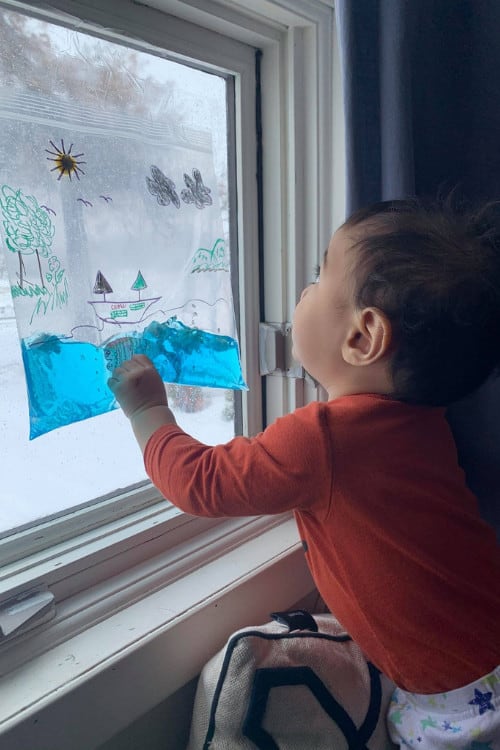
Visual Sensory Bags
A simple gallon plastic bag is the perfect way to explore the sense of touch. You can put anything (waterproof) you’d like in it! Whether that’s beads, buttons, glitter, or other small objects. Use a permanent marker to draw a design on the outside to guide your child’s exploration.
Noise Makers as Sensory Toys
Sometimes, just the simplest objects can help with stimulating a child’s auditory senses. Take old cardboard paper towels and toilet paper rolls, fill them with beans, beads, pasta, or rice, and tightly seal the ends. Allow your child to shake and rattle the tube, exploring the different sounds that different objects make. Discuss how they’re weighted differently based on the objects.
“Guess the Scent”
For older kids, this sensory activity will engage their olfactory senses. Fill small mesh bags or wax paper cups with highly scented materials like cinnamon sticks (broken in half), pine needles, pure vanilla extract, an orange peel, coffee grounds, or anything you’d like. Have your child guess what’s hiding in the cup just based on the smell!
Hopscotch
This tried and true playground game has been around for centuries and is a childhood classic. While little ones usually just hop through the squares alternating between one foot and both feet, older children can play the more complex version. Hopscotch helps with hand-eye, hand-foot coordination, learning numbers, and provides plenty of physical activity.
Tactile DIY Sensory Toys
If you’re more the make-it-yourself type, check out some of our favorite tactile sensory toys and activities you can make at home!
“What’s in the Bag?”
Fill brown paper bags filled with different textured objects. That can be marbles, pom poms, pipe cleaners, cotton balls, cereal, pasta, dried beans, anything that’s small! Try to fill the bags with objects of various “difficulties” for your child to figure out by feeling inside.
Cloud Dough
This two-ingredient dough recipe is light, airy, fluffy, and will provide hours of entertainment. All you need is 2 cups of corn starch to 1 cup of baby lotion. You can add food coloring to make “rainbow” dough, too! This squishy DIY dough is a great way to keep everyone occupied!
Rainbow Soap Foam
This is fun, even for parents. Who doesn’t love playing with foam? All you need is 2 Tbsp of dawn dish soap, food coloring (you can also use non-toxic liquid watercolors), and 1/4 cup water (if your tap water is especially hard or soft, you will need to substitute bottled water so that the soap will bubble well). With a mixer, mix on the highest possible setting for 1-2 minutes. Your foam should be able to form spiky, stiff peaks that hold its shape. Scoop it out into your container and repeat until you have all the foam you need! Then, watch them have fun swirling the colorful bubbles around and building rainbows and mountains out of them.
Busy Boards as Sensory Toys
What is a busy board? It’s simply a board with plenty of different stimulants, bright colors, physical tasks, and textures that provide plenty of sensory input for your little one. Think of it as an educational toy for the senses. There’s no specific formula for a busy board. It can simply be a combination of old skeleton keys, buttons, latches, zippers, knobs, locks, and other random things. Cut a board of plywood or wood and paint it or decorate it the way you like. Then just attach all the stuff you have! It’s great for developing hand-eye coordination and dexterity. If you’re especially handy, you could even add sounds or light-up features.
Fine Motor Sensory Toys You can Buy
There’s no shortage of sensory toys that can help your child develop fine motor skills like writing, tying their shoes, and zipping their coats. And these toys don’t have to be expensive, either! Check out some of our favorites!
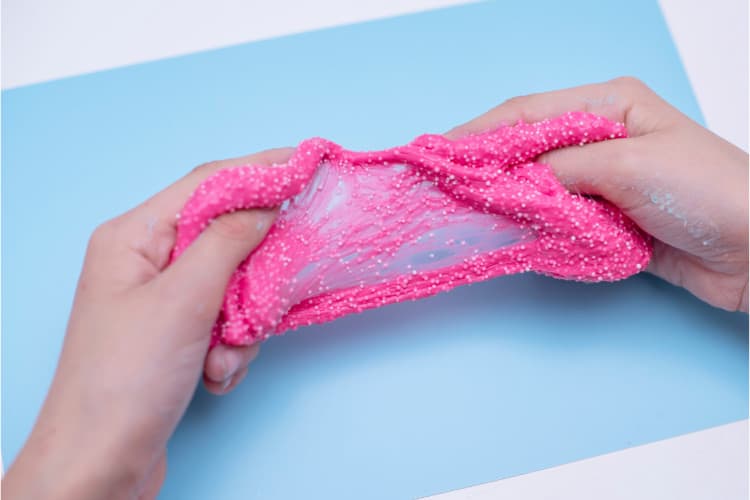
All Things Textured
Stretchy and squishy materials like play-doh, gak, slime, kinetic sand, silly putty, and foam are often used in therapeutic preschool programs and occupational therapy programs. They’re great for improving dexterity and can help stimulate your child’s creativity and imagination. Just make sure it doesn’t get stuck in fabrics, carpets, or my brother’s favorite location: the ceiling.
Sand and Water Play Stations
We used to always have one of these plastic tubs available for kids when I worked in daycare. It enhances motor skills, introduces mathematics and science concepts, sparks creativity, and fulfills social needs and emotional awareness, especially when your child is playing in groups. Don’t forget to include objects of different colors and textures that your child can use to manipulate the water or sand. Bath toys are perfect! You don’t just have to fill the bin with sand or water, either. You can use shredded paper, packing peanuts, or dried beans, too! Check out these best-selling sensory tubs on Amazon.
EduShape Sensory See-Me Ball
These textured balls are great for toddlers. They encourage fine and gross motor skills, reasoning, logic, and coordination through bouncing, grasping, rolling, and tossing. These Edushape Sensory balls are solid and durable, made with BPA-free, high-quality plastic.
Fidget Toys
Sensory fidget toys can be helpful for kids who have trouble staying focused. These small toys can productively distract and occupy a child’s attention. In addition to boosting focus and productivity, giving your child’s mind a bit of a fun mental break makes it easier to pay attention afterward. You can find hundreds of different kinds of tactile fidget toys, from fidget spinners to block games. If your child likes bubble wrap, check out these pop bracelets that they can take anywhere! For younger kids and toddlers, this baby-safe Dimple toy gives the same effect and is easier for tiny hands to manipulate.
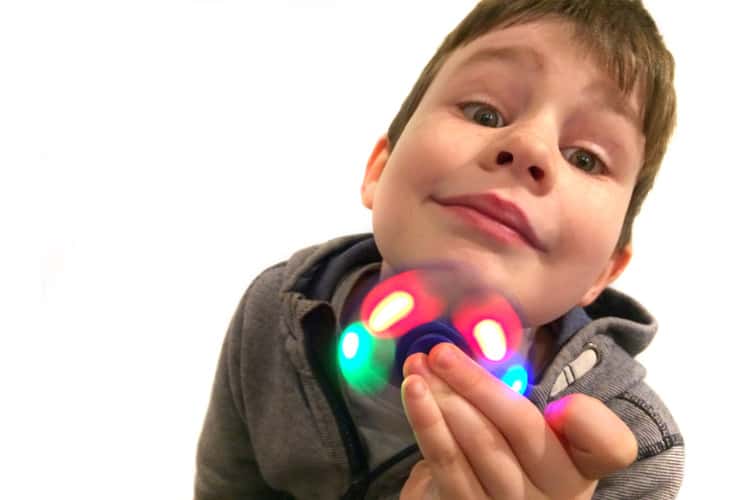
The Best Gross Motor Sensory Toys You Can Buy
Kids with ADHD especially need gross motor stimulation because of their hyperactivity. That doesn’t mean gross motor sensory toys can’t benefit both neurotypical and neurodivergent children. On-the-go kids of all ages will appreciate these toys that expend their energy in fun ways.
A Balance Board
Not only does this sensory toy improve balance, but it also strengthens core muscles. Who knows, you may even have a budding skateboarder, snowboarder, or surfer in the making!
Ball Pit
While this may be one of the more expensive options for toys, if you have the budget and the space, it can be an excellent investment. For younger children, you can get a pop-up pit for under $20. For a more sturdy pit, you can splurge on a foam model.
A Sensory Mat
These are a great way to help build nerve connections in the brain and encourage motor skills development. It comes in lots of colors and textures, and you can place it on the floor for them to explore. There are lots of different models, too. Most are foam, but some are filled with liquid. It all depends on your preference and your child’s sensory needs.
A Scooter Board
Anyone who went to school in the 90s remembers when these scooter boards were brought out–it was going to be a great day (as long as you don’t run over your fingers). These simple yet effective scooter boards are perfect toys for kids working on their coordination and gross motor skills.
A Crash Pad
Kids can use “crash pads” or sensory pads as a safe and soft “landing zone” when they’re feeling overstimulated or a peaceful place for reading, playing, stress relief, and relaxing. It is sturdy enough for jumping yet soft enough for sitting. While an empty “crash pad” can provide them with plenty of room for bouncing, jumping, and flopping around, you can also fill the space with stuffed animals, pillows, blankets, soft blocks, or anything your child needs.
A Trampoline
You don’t have to splurge on a huge trampoline for the backyard if you have a child who needs a lot of physical stimulation. A 3′ trampoline with a railing can be equally helpful for a child’s developing motor skills. Hopping like a bunny may just become their new favorite exercise!
Stepping Stones as Sensory Toys
If your child enjoys hopping from place to place (The Floor is Lava, anyone?), they may benefit from these balance stepping stones as a sensory tool. You can set them up both inside or outside, and they’ll provide plenty of entertainment for your jumping kiddo.

Play Tunnels and Tents
What kid doesn’t love a tunnel? While you may need a lot of space for these, they can be a great resource, especially for toddlers and kids with a lot of energy. The climbing movement also helps them control their arms and legs and builds gross motor function. If a tunnel system or tent isn’t in the budget, an excellent old blanket fort or big box tunnel can work wonders.
“Sensory Sox”
I kind of want one of these for myself. These full-body socks can help kids develop spatial awareness and encourage creative movement for your child to improve balance, gross motor skills, and proper posture. If your child benefits from using a weighted blanket, this may be a great investment.
Picking the Right Sensory Toys for Your Child
With all the options out there, it can be tough to narrow down the right sensory toy or activity for your child. As a parent, you’re the one who best knows their needs. Pay attention to how they engage (or don’t engage) with the world around them. But don’t be afraid to talk to their teacher, therapist, or other professional about ways you can best supplement their learning and exploring at home, especially if your child has special needs.
Check out some popular toy companies like Fisher-Price, Edushape, FatBrain, FunAndFunction to see what they have to offer. Whether your child has Autism, SPD, ADHD, or is neurotypical, share their favorite sensory toys with others on FamilyApp!

